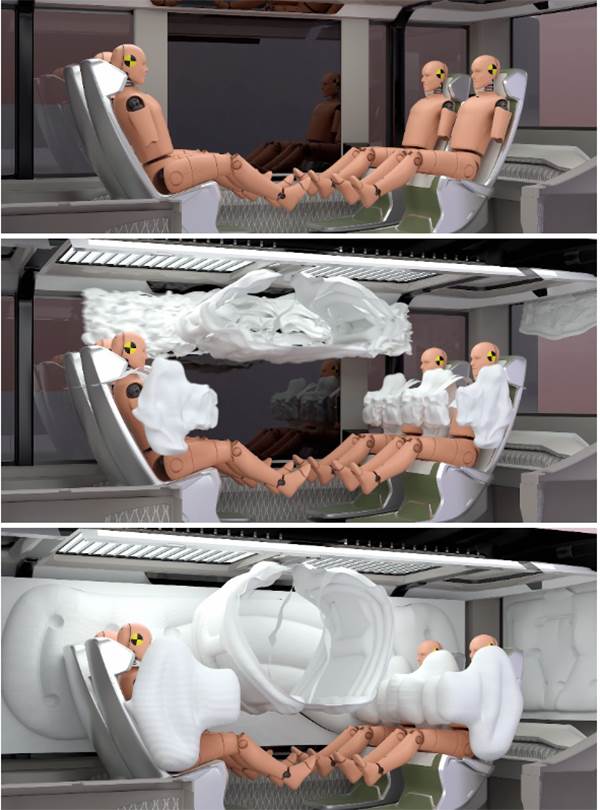Global automotive parts vendor Hyundai Mobis, which is part of the Hyundai Group of South Korea, has announced development of a ‘Brain Injury Prevention’ airbag.
The company states the brain injury prevention airbag received a perfect score in the Brain Injury Criteria (BrIC) in a new crash test conducted by the US National Highway Traffic Safety Administration (NHTSA). The Brain Injury Prevention Airbag showed proven performance in the Obilque Crash test, which is due to be introduced by the NHTSA in light of the actual accident scenarios. The technology also won the Silver Tower Order of Industrial Service Merit at the New Technology Commercialization Competition hosted by the Ministry of Trade, Industry and Energy (MOTIE) in Korea.
According to Hyundai Mobis, conventional airbags installed in mass-produced cars don’t fully prevent a passenger’s head from turning or getting injured. On the other hand, the new airbag by Hyundai Mobis has a protruding area (supplementary chamber) that maximises pressure on the area about the time to prevent the passenger’s head from turning. This effectively lowers the possibility of the driver receiving a head injury.
Airbags for purpose-built vehicles
Hyundai Mobis has also developed a Total Airbag Solution designed for purpose-built vehicles (PBVs) targeting the future mobility trend. To accommodate the varying interior design, the company placed airbags in niche areas inside the vehicle.
 Hyundai Mobis PBV airbags in action. From top: Face-to-face Protection Airbag bursts down from the car ceiling to prevent passengers facing each other from crashing into one another. Curtain airbags drop down from the area that connects the ceiling and the roof to envelop the entire area inside the car. Omnidirectional airbags that are placed inside seats surround the passengers’ body all at once to minimise injuries.
Hyundai Mobis PBV airbags in action. From top: Face-to-face Protection Airbag bursts down from the car ceiling to prevent passengers facing each other from crashing into one another. Curtain airbags drop down from the area that connects the ceiling and the roof to envelop the entire area inside the car. Omnidirectional airbags that are placed inside seats surround the passengers’ body all at once to minimise injuries.
Face-to-face Protection Airbags burst from the centre ceiling to prevent passengers from colliding with one another. Curtain airbags are installed in the four areas where the windows are connected to the roof, and they pop open to cover all four directions inside the vehicle as the name suggests. Moreover, omnidirectional airbags, which are placed on the left and the right side on the back of the seat, act as a protective shield that surrounds the passenger’s body.
Hyundai Mobis also developed slim airbags, which are as much as 40% thinner than the previous ones to better suit electric vehicles that have a very different structure compared to internal combustion cars. Slim airbags can be installed in small spaces, such as on variable display panels or on the side of a slender seat. When the airbag is placed on an in-car display, the size is adjustable based on the position. In this way, the driver can get the optimum protection depending on the distance between the driver and the display.
Lead image: Hyundai Mobis/Twitter
ALSO READ
Hyundai Mobis develops world-first proximity detection display tech
Hyundai Mobis develops integrated vital signs controller for safe driving
Hyundai Mobis develops adjustable display tech for vehicle cockpits
Hyundai Mobis develops automated system for parking in tight spaces
